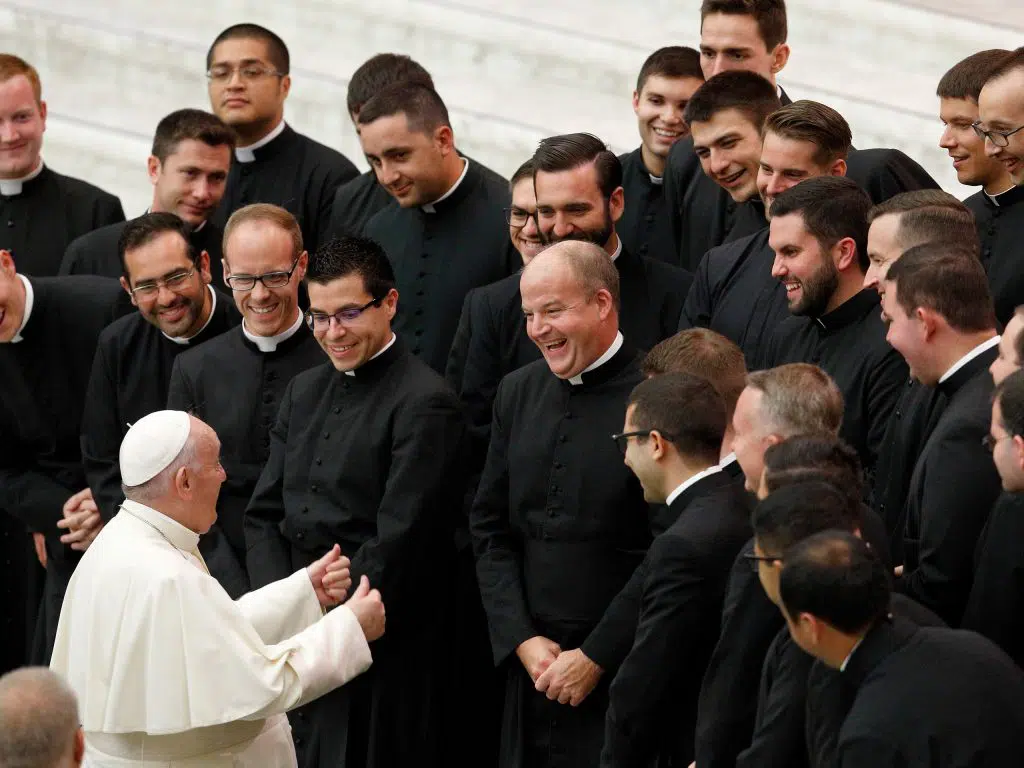Even among saints there is a hierarchy in which martyrs and mystics seem to get the lion’s share of attention. It’s only natural – we’re drawn to the drama and heroism of martyrdom and the supernatural marvels of visions and private revelations. But John Berchmans, the son of a Flemish shoemaker, was a saint of very modest ambitions.
From an early age John loved God, loved his neighbor and longed to serve them as a priest. As the first step John did what so many young boys who hope they have a religious vocation do: He volunteered as an altar boy. From the first time he served Mass John knew he was meant for the priesthood. He never felt so close to God as when he was in sanctuary of his parish church praying the responses and bringing the priest everything that was necessary to say Mass. He loved it so much that he volunteered to serve two or three and some occasions as many as five Masses in one day. For his deep devotion to the Mass, St. John Berchmans is the patron of altar servers.
John’s budding vocation was encouraged by Father Peter Emmerich, a Norbertine monk of Tongerloo Abbey. He was John’s first teacher and the most important influence on his religious development. Father Peter taught John how to write Latin verse, took him on pilgrimage to local shrines, and let the boy accompany him on visits to priests and prelates in the area.
At age 17 John joined the Jesuits and began his formal studies for the priesthood. Even then the Jesuits were renowned as intellectuals, teachers, preachers and missionaries who already had given the Church a fresh crop of martyrs (at the Jesuit novitiate in Rome, John met St. Henry Morse who a few years later would be hanged, drawn and quartered in England). The Jesuits appealed to John because they emphasized an orderly, down-to-earth approach to the spiritual life. John, whose favorite religious devotions were praying before a crucifix, saying the rosary and of course attending Mass, felt entirely at home among the Jesuits. Laypeople who met him liked him and appreciated his matter-of-fact devoutness. His fellow Jesuits regarded him as genuinely holy, a low-key kind of saint.
In Rome John enjoyed a brilliant career as a student of philosophy. Just before his final exams, his superiors asked John to participate in one of the public disputations that were a regular part of Jesuit life at the time. He performed so well he was appointed to the team of Jesuit students slotted to debate students from the Greek College.
The day after the disputation with the Greek College John fell ill with dysentery. A fever followed, then inflammation of the lungs. When it became clear that John was dying, a steady stream of visitors came to his room to say goodbye. On Aug. 13, 1621, John Berchmans died; he was 22 years old.
If sanctity is ever ordinary, then John was an ordinary saint. His cult began in his home, what is now Belgium, where people felt a strong attachment to him. Engravers produced holy pictures of him, but could not keep up with the demand. Within a couple months they had sold 24,000 copies of John’s portrait, just in the Low Countries.
Craughwell is the author of numerous books about the saints, including Saints Behaving Badly (Doubleday, 2006).


Christ commands us to love